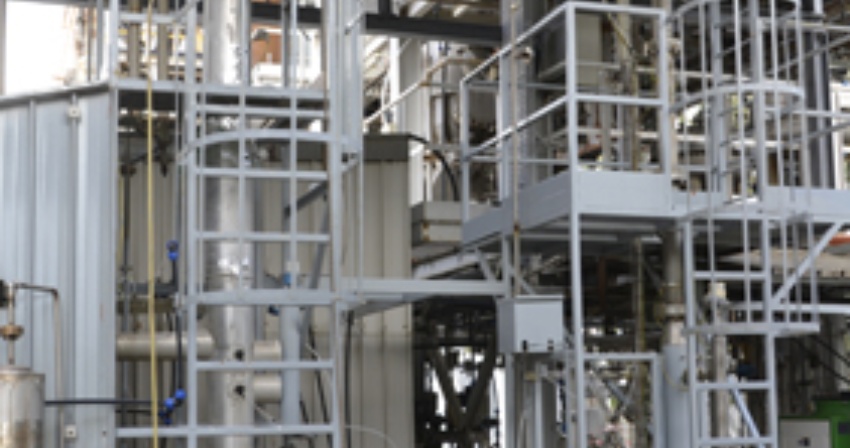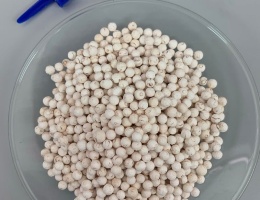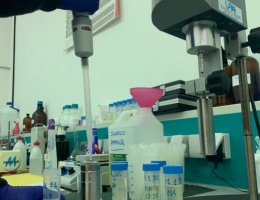Catalytic regeneration of solvents for CO2 absorption
Research line developed within the CEEP (Centro Eccellenza Energia Pulita) project on the topic of low-carbon energy production.
Date:
07 September 2021
CO2 capture, utilisation and storage applications are considered, individually or in combination (CCUS), among the most promising for reducing carbon dioxide emissions.
Among the most widely used technologies for the removal of CO2 from gaseous effluents, the use of aqueous amine-based solvents is the most popular solution due to its low operating costs, the ease of integrating this technology into commercial gas treatment plants, and the technology's effectiveness in treating large quantities of gaseous effluents. However, the main difficulty with this technology, through which carbon dioxide is absorbed into the solution, is the energy consumption due to the regeneration of the spent solvent: approximately 70-80 % of the operating costs of the capture process are related to the energy consumption of the solvent regeneration phase, significantly influencing the choice of the most appropriate technology to consider.
Currently, monoethanolamine (MEA) in the 5M concentration (30% by weight) is the most widely used chemical solvent in post-combustion processes due to its low cost and high efficiency. The performance of this solvent is taken as a reference for the study of new applications with advanced solvents and innovative plant solutions, both during absorption and regeneration. The energy consumption required to regenerate a 5M amine solution is 4 MJ/kg CO2.
The goal of Sotacarbo's research is to improve the CO2 desorption process of amine solutions to reduce energy expenditure in the regenerative phase.
An alternative can be the use of special solid acid catalysts in the regeneration column. These materials can promote CO2 desorption by lowering the activation energy for proton transfer and the release of CO2 from the carbamate molecule, formed as a result of the reaction between the amine and CO2. This approach is still being tested in the laboratory. The use of a catalyst in the desorption process makes it possible to work at lower temperatures with advantages in several respects: in fact, at lower desorption temperatures (< 105 °C), there is a considerable reduction in water evaporation and the heat required to heat it up, with consequent savings in terms of solvent replenishment. In addition, amine degradation is preserved.
Most of the work available in the literature concerns specific studies on the desorption unit, often conducted in batches on a laboratory scale (with a maximum of 4 l of amine solution to be regenerated). Sotacarbo planned an experimental campaign at the carbon dioxide adsorption-desorption plant, located in the Pilot Platform of the Research Centre, in collaboration with the National Research Council (CNR-ICCOM in Sesto Fiorentino), which has been studying the process of CO2 adsorption and regeneration with amines for years. The aim of the research was to evaluate the energy savings resulting from the use of an acid catalyst placed in the desorption section for the regeneration of an aqueous solution of MEA 5 M.
The Sotacarbo Pilot Platform contains a facility dedicated to the experimental testing of CO2 chemiabsorption through aqueous amine solutions and capture solvent regeneration. The stripping column for the regeneration of the spent capture solution was designed and built in 2011. It enables the reduction of costs related to CO2 stripping tests and those related to solvent procurement and disposal. The amine regeneration unit is capable of both continuous and batch operation of the solvent from the CO2 capture section. Through a diffuser, the gas to be treated is fed into the column, where it reacts by coming into contact in countercurrent with the amine solution flowing down the column.
The tests were carried out following an in-depth study of the characteristics of various catalysts to be tested, considering their shape/size, chemical characteristics, amine/catalyst ratio and the process conditions to be applied. Suitable materials to be used for this particular application are H-ZSM5 and HY zeolites, γ-Al2O3, mesoporous silico-aluminates such as MCM-41 or SAPO-34 and superacid materials such as SO22-/ZrO2/SBA15 or Ce(SO4)2/ZrO2. The evaluations that led to the choice of catalyst to be tested for the desorption unit tests took into account not only the characteristics of the materials, but also their cost-effectiveness and ease of retrieval. The choice led to the use of ZSM-5 zeolite-type catalysts.
During testing, the amine solution is sampled from the plant and characterised in the laboratory in terms of density, pH, viscosity and CO2 loading. The data obtained is correlated with that of an online analysis system that measures CO2 concentration over time and plant operating data.
Last update
06/11/2024, 12:03



